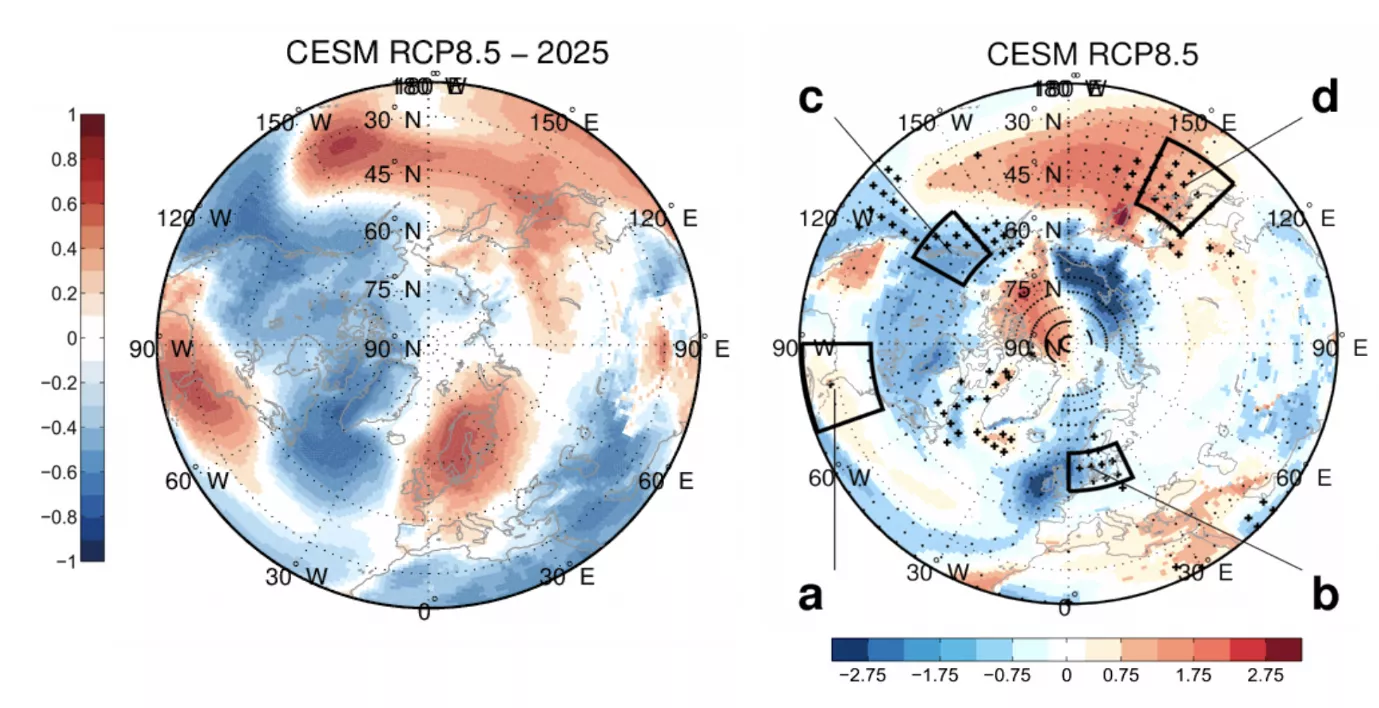The so-called Arctic Oscillation (AO), an important contributor to long-term winter weather forecasts, may undergo unprecedented changes in the coming decades due to anthropogenic activities, posing a challenge for winter weather forecasters – claim Hungarian scientists.
Researchers from the Eötvös Loránd Research Network’s MTA-ELTE Theoretical Physics Research Group (Tímea Haszpra and Mátyás Herein) and the Research Centre for Astronomy and Earth Sciences (Dániel Topál) brought evidence for the first time in climate science that the structure of the Arctic Oscillation – the dominant mode of natural atmospheric circulation variability of the Northern Hemisphere winter – may be altered in a warming climate. This change is especially important to be quantified in light of its importance to winter weather forecasters, who use the AO to predict European weather for up to three weeks.
In general, natural climate variability co‐exists with changes brought about by anthropogenic activities. This natural variability involves exogenous components such as volcanic eruptions and changes in the solar cycle in addition to the intrinsic (or internal) variability of the climate system arising from chaotic dynamics. This latter uncertainty is an inherent feature of systems driven by chaotic dynamics and can only be predicted in terms of probability. This means that to properly address the effects of future climate change, it is necessary to consider possible changes in internal variability (as manifested in atmospheric circulation changes) and study ensembles of climate simulations with slightly different initial conditions that account for this internal climate variability in a single climate model.
Haszpra et al 2020 discovered the opportunity to rephrase a previously common method in atmospheric science, the Empirical Orthogonal Function (EOF) analysis to large ensembles of climate simulations. This will allow for a more thorough interpretation of possible changes in future winter atmospheric circulation. The new method is called snapshot-EOF, where the word ‘snapshot’ refers to the fact that the EOFs are computed instantaneously across the ensemble dimension of the simulations rather than using time as the independent variable. This has enabled scientists to conclude that the structure of present climatic teleconnections, i.e., physical connections between distant regions of the Earth bridged by atmospheric waves, are not constant and can change depending on the amount of greenhouse gases.
A practical consequence of their findings involves the possibility of increasingly variable European winters to come. In other words, future changes in the AO and the polar vortex may favor winters with either north-south outbreaks of cold Arctic air or dominantly mild south-west air masses unevenly following each other with increased variability.
The original article can be accessed online:
https://journals.ametsoc.org/doi/abs/10.1175/JCLI-D-19-0004.1
